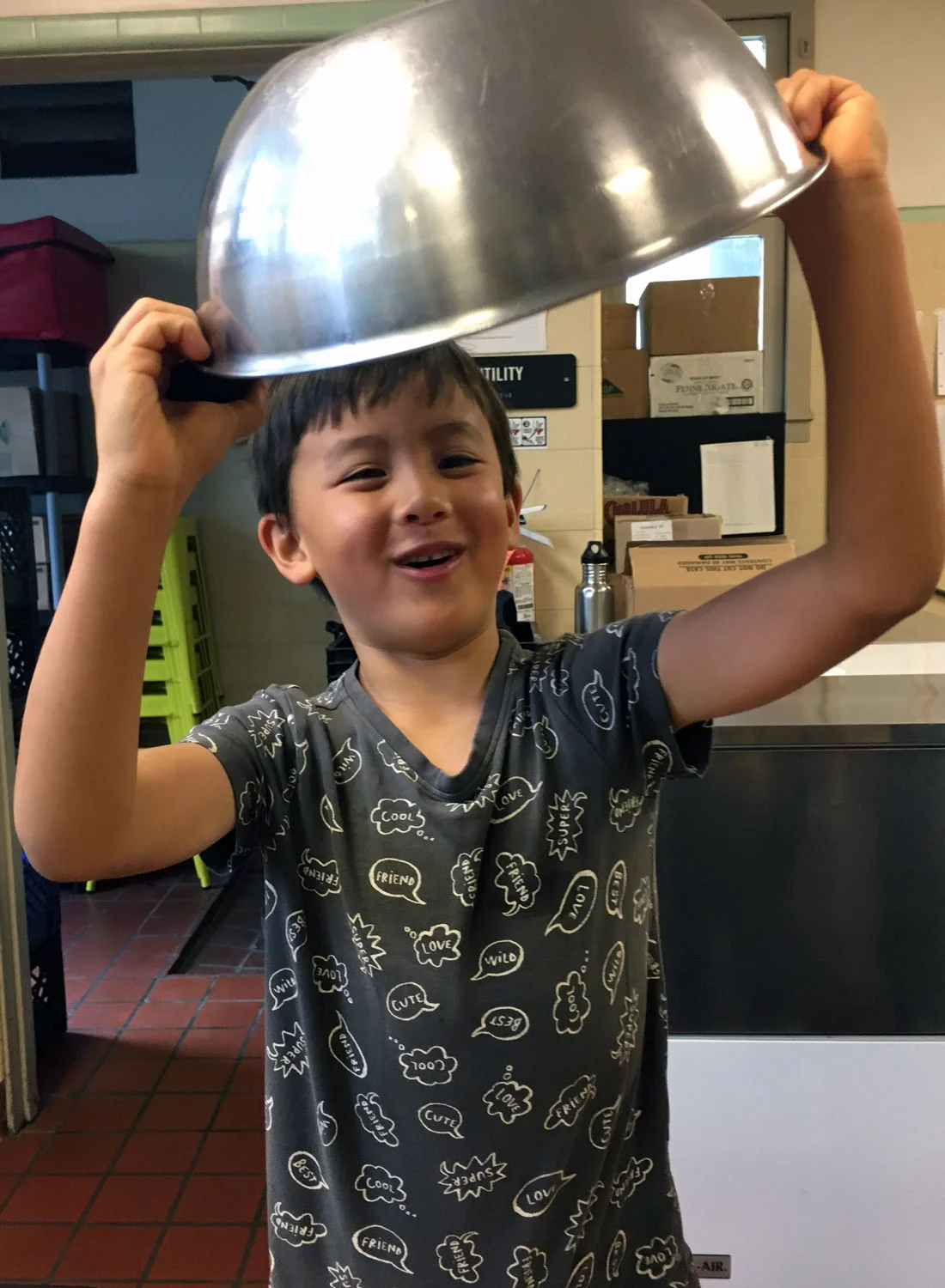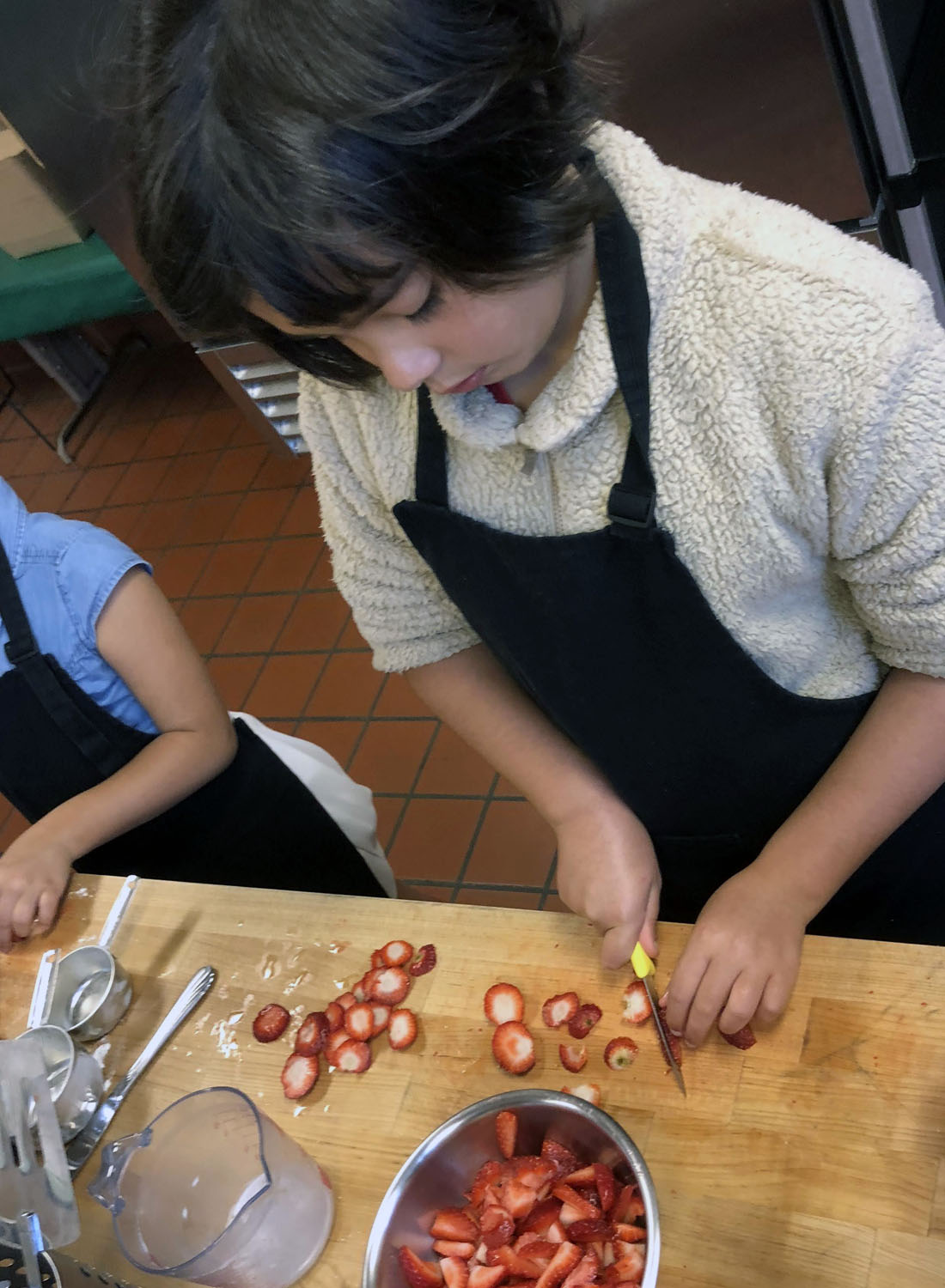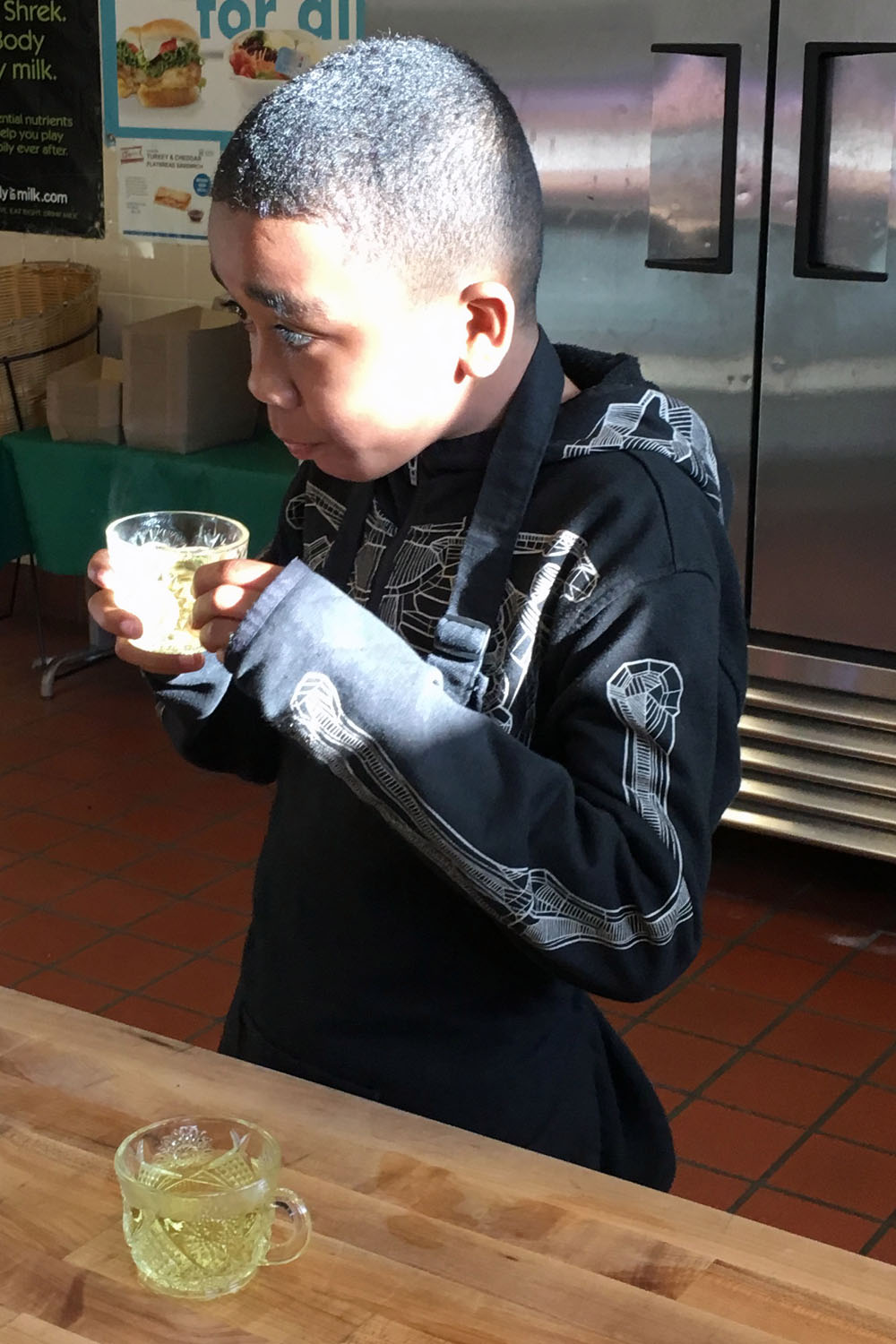This week we made pupusas in celebration of the food of El Salvador. We moved our opening circles to the classroom to give everyone a chance to listen more actively with less distraction, which worked well. Students shared what they had learned about the country or something personal from their own families about Salvadoran culture.
One thing that quickly emerges when you study human history through food is how much we have in common. The foundation of the pupusa is nearly identical to that of the tortillas we made from Mexico. However, before cooking the masa dough, we filled the pupusas with fresh cheese, then closed up the filling before frying in oil.
We enjoyed our Salvadoran snack with a traditional accompaniment called curtido, a cabbage relish Ms. Katie and I made a week before to give the ingredients time to ferment and develop flavor. The result was intensely delicious and so easy to put together, we hope lots of students will try the recipe at home.
All of us at The Breakfast Project wish to give a special shoutout to our fearless classroom volunteers: Aurelie David de Lossy, Julie Wise, Cindy Peterson, and Melissa Blizzard Brown! Thank you for taking time to work and eat with our amazing third graders every week.



































































































































































































